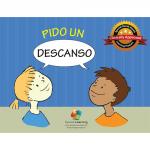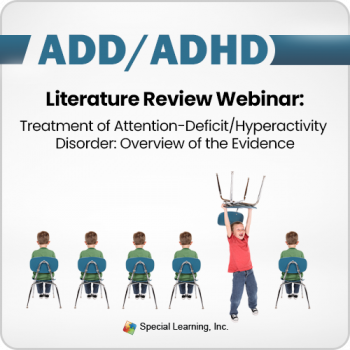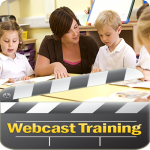Blog Categories
- ADHD
- Applied Behavior Analysis
- Autism Awareness
- Autism Service Providers
- Case Studies
- Dignosis
- Classroom Management
- Credentials
- Ethics
- Family Matters
- FAQs About LIVE Events
- Financial Planning
- Holiday Planning
- IEP's
- Panelists
- Private Equity in Autism & ABA Industry
- Psychopharmacology
- Sensory Processing Disorder
- Speech and Communication
- Subject Matter Experts
- Summer Planning
- Transition Planning
What Are All of These Terms? 6 Terms To Make You More Familiar with “a Behaviorist’s language”
Before that, she served as Training and Behavior Plan Supervisor, Outreach and Training Coordinator, Program Supervisor/Outreach Support Technician and Behavior Technician. During this time, she also moonlighted at Piece by Piece Consulting Services, a private consulting services firm specializing in behavioral treatment methods utilizing Applied Behavior Analysis (ABA) principles for children with Autism Spectrum Disorders as a
Behavior Consultant. At Step By Step, she is responsible for the hiring and training of all senior clinical staff members. In addition, she trains Clinic Directors on how to develop and monitor treatment and behavior plans, and teaches Clinical Assistants the principles of
ABA and monitoring procedures.
Christine regularly presents at professional conferences on topics related to autism and behavioral support. Her areas of expertise include ABA, training, Individual Education Plans (IEPs), treatment planning and behavior modification and behavior management. Additionally, she has developed autism training programs for professionals and families on a variety of topics, including ABA Principles and Procedures, The Picture Exchange Communication System, Token Economy Systems, The Maintenance and Generalization of Acquired Skills and Decreasing Challenging Behaviors.
She has a BA in Psychology and a minor in Sociology from The Ohio State University. She is a Board Certified Assistant Behavior Analyst (BCaBA) through the University of North Texas and is currently enrolled in the M.S. in ABA & Autism program at The Sage Colleges. She will graduate in the spring of 2012.
What Are All of These Terms? 6 Terms To Make You More Familiar with “a Behaviorist’s language”
Because Applied Behavior Analysis (ABA) is a science, there is a lot of terminology that we use and as a parent, these terms can be very confusing. As behaviorists, we sometimes forget our audience and speak in “our language.” Having a child with a disability is challenging enough and learning a science can sometimes feel overwhelming, especially when you feel we are speaking “another language.” Please know that we do not use this language in an attempt to overwhelm you, we are just excited to teach others about our passion.
Applied Behavior Analysis (ABA) is a set of lawful behavioral principles that explains why behavior occurs and how to change the environment to increase or decrease the rate of behavior. All human behavior is shaped through interactions with the environment. Operant behavior is synonymous with learned behavior, behavior changes through the exposure to certain events in the environment that occur right behavior and right after the occurrence of a behavior. Behavior is learned, it does not just occur “out of the blue.”It is set of principles that accounts for all human behavior, it is not a “method of teaching” or a “therapy.” The principles of ABA are not utilized specifically to children, to people with an autism spectrum disorder or to people with developmental disabilities, it account for EVERYONE’s behavior.The three-term contingency is the basic unit of analysis in Applied Behavior Analysis. It represents the behavior and the environmental events surrounding the behavior.
A → B ← C
A = Antecedent, something in the environment that occurs right before the behavior, it elicits the occur of the behavior (makes it happen)
B = Behavior, this is the behavior of interest (labeling something “red,” hitting a peer in the classroom, saying “hi”). This is something that someone “does.” It is something that we can “see” and “measure.”
C = Consequence, something in the environment that occurs right after the behavior. This is what determines if the behavior will occur again or stop occurring.
Reinforcement is the most widely used principle of ABA. It is all about the “C.” It is something that happens right after a behavior that will make the behavior occur again.
Here are some examples:
B ← C
B = treating the weeds in your yard ← C = praise from neighbors, therefore treating the weeds in your yard will occur again
B = completing a full 2 weeks of work ← C = receiving a full paycheck to pay for rent and groceries, therefore completing a full 2 weeks of work will occur again
B = completing a research proposal ← C = receiving the approval to complete the study, therefore completing the research paper will occur again
B = scratching an “itch” ← C = removal of the itch, therefore scratching the itch will occur again
B = taking a pain killer in the presence of a headache ← C = removal of the headache, therefore taking a pain killer will occur again
RECOMMENDED PRODUCTS
Historia Social “Pedir un descanso” Plan de Estudios
ADHD Literature Review Webinar: Treatment of Attention-Deficit/Hyperactivity Disorder: Overview of the Evidence (RECORDED)
Strategies to Increase Beginner Classroom Participation Skills: Decreasing Problem Behavior with an FBA Part 1: How to Begin









